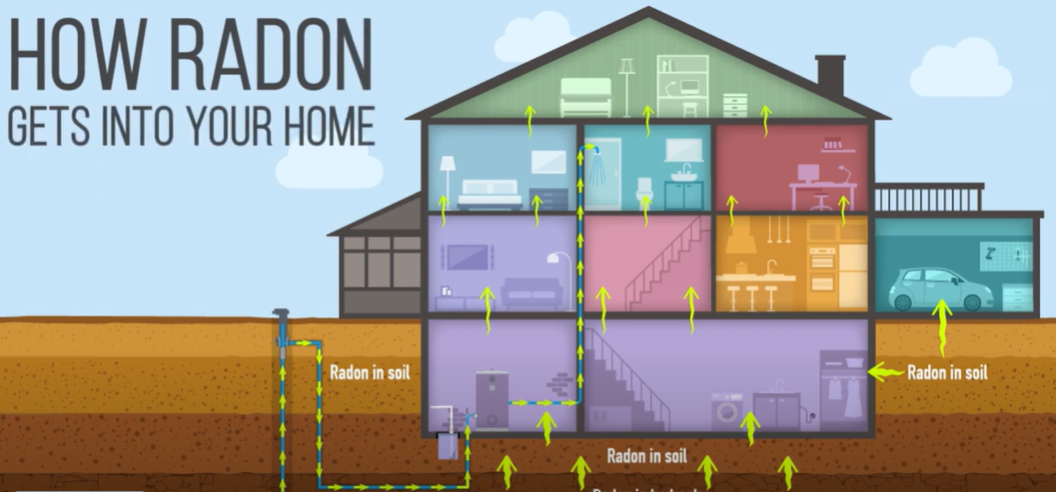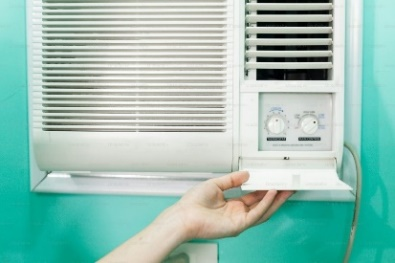Did you know the air inside your home can cause health issues? Sometimes our indoor air can affect our health more than the air outside. Especially because Americans spend an average of 90% of their days inside.
We’ve created a list of things you should know about what indoor air quality is, its effects, and what you can do to improve your indoor air quality.
IAQ and Sources of Pollution
Indoor air quality (IAQ) is a measure of the air’s healthiness in an indoor environment. Because our homes are sealed off from the outside, pollutants and particles in the air can become highly concentrated and more harmful to our health. These pollutants are microscopic, often invisible to the human eye. This is why they are so dangerous and often go undetected for too long. Some of the most common indoor air pollutants include:

Particulate matter (PM)
“Particulate matter” refers to any microscopic particles that are so small they can be breathed-in and enter the bloodstream directly. Common examples include smoke, ash, dust, and dirt.
Dust and dirt can become concentrated in your home if you don’t dust or vacuum regularly, or if you forget to check and change your air filter regularly (every ~30 days). Secondhand smoke is the most common source of smoke and ash, and e-cigarettes produce vapors that are harmful to your health too.
Chemical pollutants
Chemical indoor air pollutants are typically classified as products containing Volatile Organic Compounds (VOCs), which release harmful aerosols or fumes when used in the home. Common examples include household cleaners, paints, air fresheners, and perfumes/colognes.
Biological pollutants
Biological pollutants are any microscopic organisms that can be breathed in and affect your lungs. Common examples include mold, pollen, bacteria/viruses, and pet dander.
These are considered “biological” pollutants because they are living organisms on their own (like mold or bacteria) or they originally came from a living thing (like pollen or pet dander). In homes with lots of pets or allergy-prone family members, changing and cleaning air filters regularly is one of the most effective ways you can reduce biological pollutants in your air.
Radon
Radon is a naturally occurring radioactive gas found in soil and rock and is the leading cause of lung cancer among non-smokers. It is impossible to see, taste, or smell radon gas – testing for home is the only way to detect it. Because radon is released from rock and soil and enters your home through cracks in the foundation, older-constructed homes are more likely to have harmful levels of radon.

Effects of Poor IAQ
Just because you can’t see the air around you, does not mean it is not negatively affecting you. In fact, bad air quality in your home can have both short- and long-term effects for you, your family, and any pets that you have.
- Health Impacts: Short-term exposure to any indoor air pollutant will cause allergic reactions or allergy-related symptoms, such as coughing, sneezing, headaches, and eye/throat irritation. Exposure to particulate matter or biological pollutants over long periods of time will lead to lung damage, respiratory infections, and chronic allergies, if left untreated. Long-term exposure to radon or VOCs can lead to lung damage and certain respiratory, kidney, or nervous system diseases.
While poor air quality affects everyone, some groups are particularly vulnerable. People who are the most at-risk for negative impacts from poor IAQ include children, senior citizens, and people with pre-existing respiratory or immune system conditions. These populations have respiratory systems that are more easily affected by poor indoor air.
What Can You Do: Manage and Monitor
Here are some simple and affordable strategies to improve your indoor air quality:

- Check and change your air filter regularly: Air filters can get clogged and dirty within 30-90 days of installation. By changing and cleaning these filters on a regular basis, you can improve air flow and air quality and extend the life of your air conditioner.
- Use EPA Safer Choice-certified products: EPA certified Safer Choice products are made from ingredients that are less likely to irritate your respiratory system. These products are especially safe for children and other vulnerable groups sensitive to specific chemicals.
- Stop pollution at its source: Consider what is being used in your home that may be affecting your air quality and take action. If there are people in the home who smoke or vape, ask them to do so outside. If certain cleaners or air fresheners give you a headache, try to minimize their use and look for low-VOC products.
- Get your home tested for radon: Department of Health offices in every county offer free radon tests to homeowners. These tests can protect your home from radon, a common air pollutant that is the leading cause of lung cancer. Testing your home is the only way to identify if radon is present in your home and at what concentrations.
- Consider an air purifier or dehumidifier: Air purifiers will filter the air in your home and can also sanitize it, removing harmful allergens and microorganisms. Dehumidifiers reduce your home’s levels of moisture, which can limit the risk of mold and mildew.
- Don’t hesitate to ventilate: Properly ventilating your house is a fast and reliable way to reduce the concentration of indoor air pollutants, and it will make

Credit: Santa Fe Extension your home more comfortable! You can increase ventilation by opening windows for short periods of time and using exhaust fans in the kitchen and bathroom.
- Use plants as air purifiers: Certain plants purify air naturally by absorbing toxic chemicals from the air to ‘digest’ them until they are harmless. Plants are a great nature-based solution to consider for cleaning your air – and they don’t use any extra electricity! Common purifying plants include golden pothos, peace lily, and snake plant. (Note: Many plants known to purify the air, such as the examples listed, are toxic to animals.)
Learn More
- UF/IFAS Extension Sarasota County’s Healthy Homes webinar: Watch a recording of our “Healthy Homes” webinar, which goes over safe and healthy ways to keep your home clean, pest-free, and efficient. The YouTube recording is found here: https://www.youtube.com/watch?v=3t4zQHNmXpw&t=7s
- Check out our website: https://www.scgov.net/government/sustainability/sustainability
- Visit our Eventbrite and keep your eye out for upcoming sustainability classes: https://www.eventbrite.com/cc/program-sustainability-213939
 2
2
